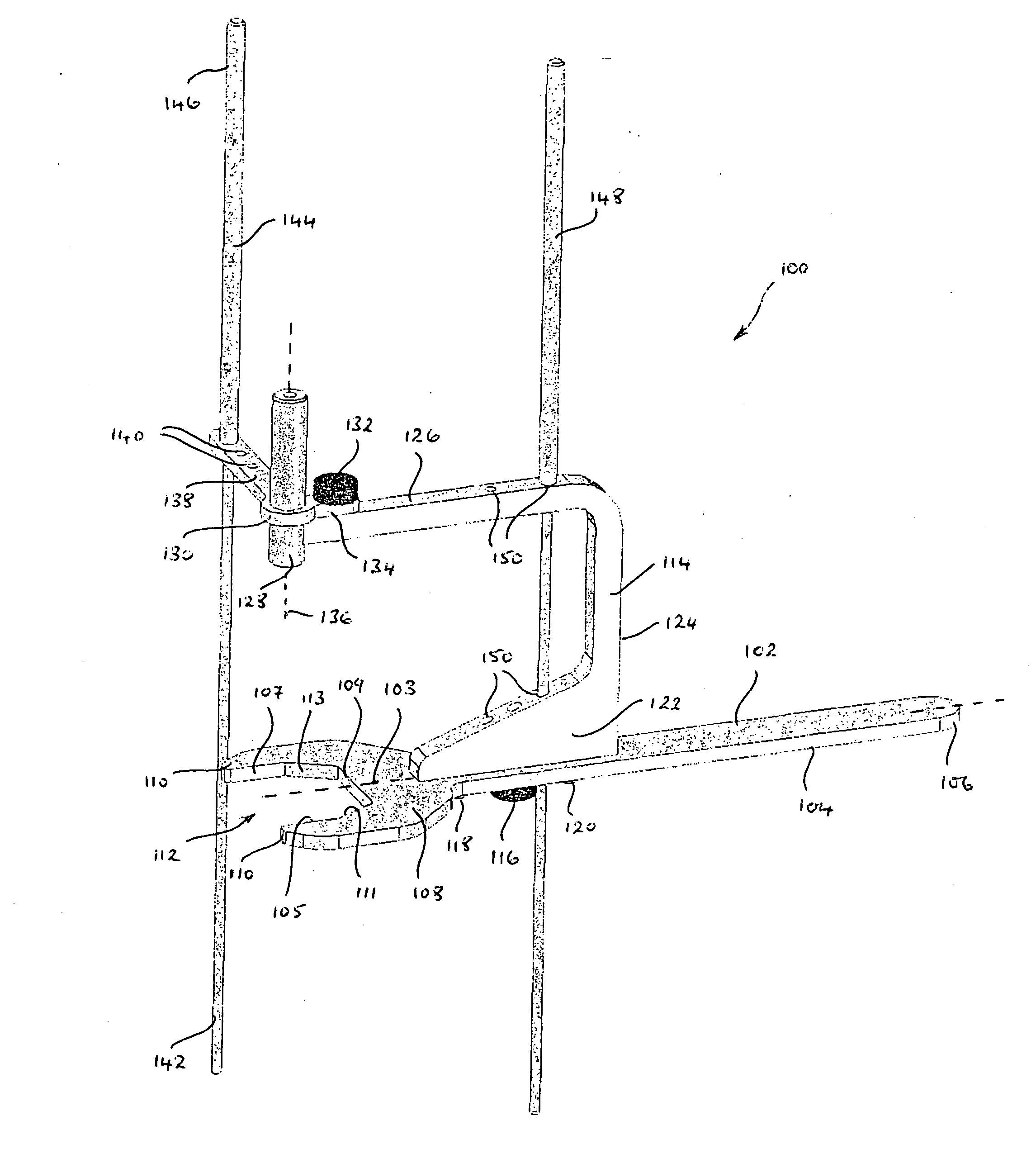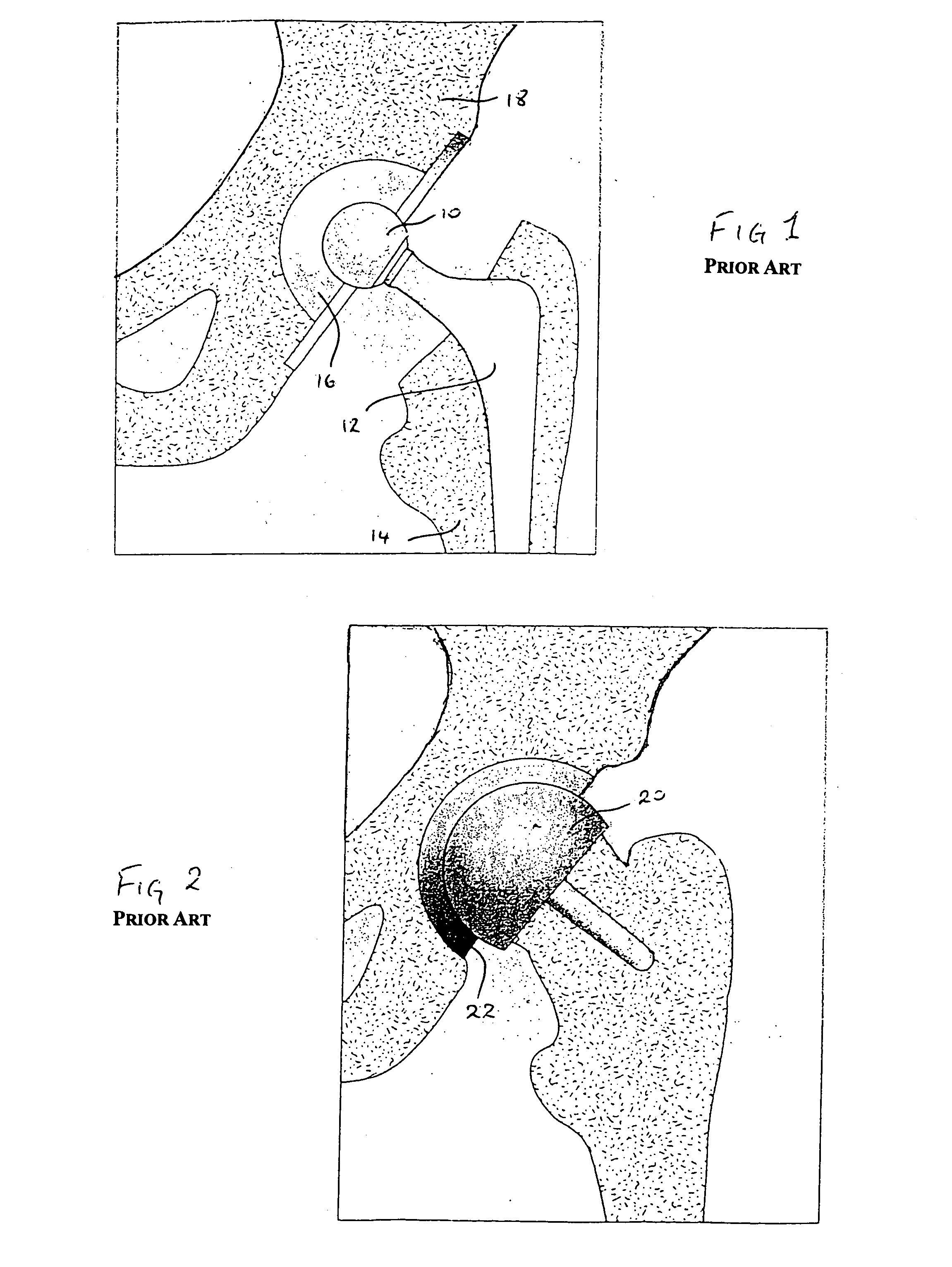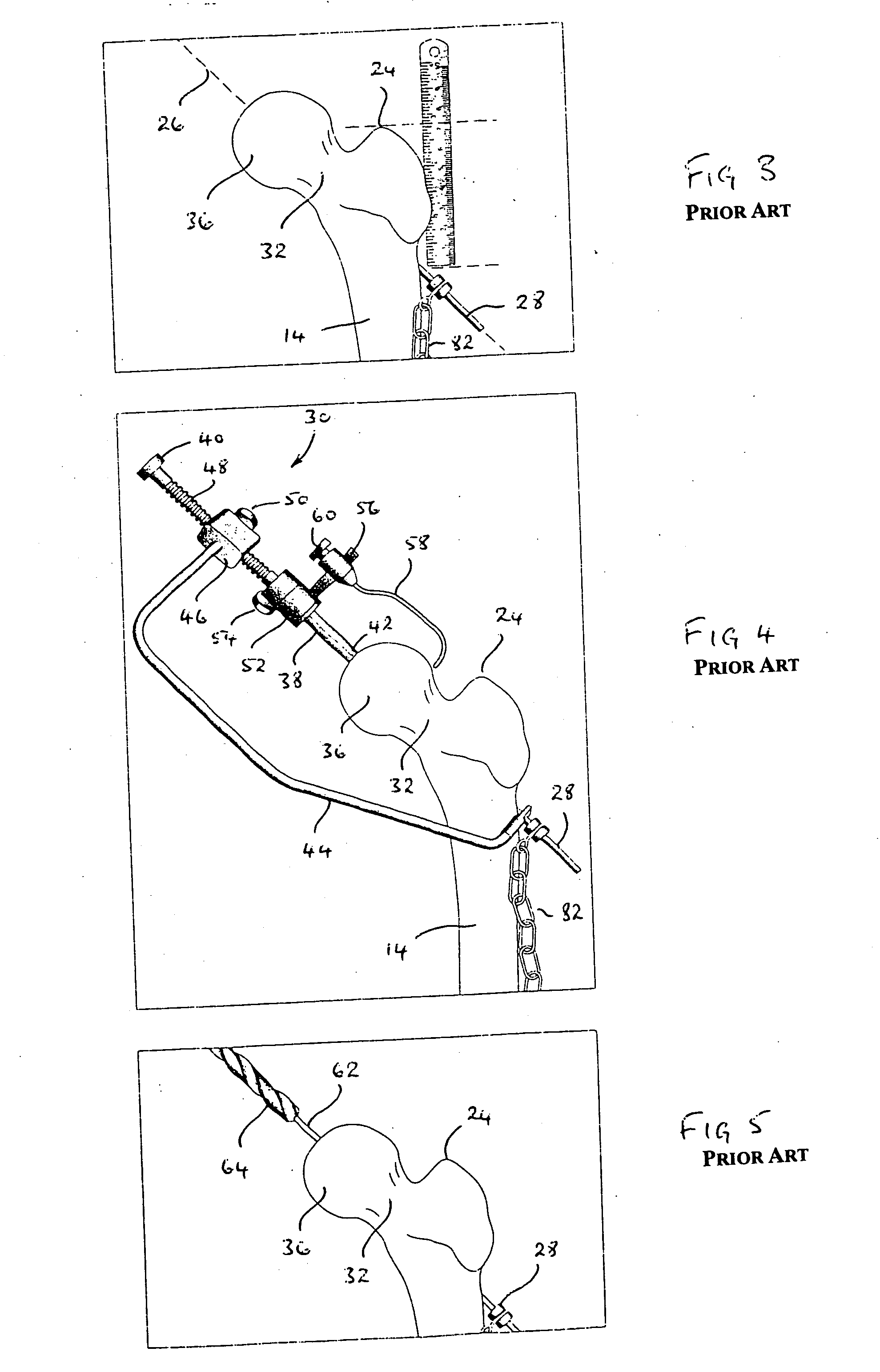Head centering jig for femoral resurfacing
a femoral resurfacing and centering jig technology, applied in the field of head centering jig, can solve the problems of loose design and loosening of artificial joints, and achieve the effects of accurate positioning, convenient alignment of guide members, and accurate positioning
- Summary
- Abstract
- Description
- Claims
- Application Information
AI Technical Summary
Benefits of technology
Problems solved by technology
Method used
Image
Examples
first embodiment
[0081] Thereafter, as with the head centering jig of the first embodiment, the plane defined by the locating tool 202 is tilted by raising and lowering the handle 204 until such time as the first alignment rod 114 is aligned parallel to the central axis of the femoral neck when viewed anteriorly. Assuming that the appropriately sized jig has been selected and that the femoral neck is a close fit within the closed circle defined by arcuate surfaces 210 and 218, the central axis 136 of the guide tube 128 will lie within a plane parallel to the coronal plane. By then aligning the first alignment rod 144, the central axis 136 is brought into coincidence with the central axis of the femoral neck. If additional alignment is required a second alignment rod 148 may be aligned with the central axis of the femoral neck when viewed laterally. Once the surgeon is satisfied that the central axis 136 of the guide tube 128 is aligned with the central axis of the femoral neck he may use his free ha...
second embodiment
[0090] The locating tool 302 is moveable between an open position, as shown in FIG. 21, and a closed position, as shown in FIG. 19. In the open position the first and second arcuate members 308a and 308b are sufficiently spaced apart to permit the receipt of the femoral neck. Once the locating tool 302 is in position it is closed and held in the closed position by the retaining member 114 which is mounted on the elongate handle 304. The locating tool 302 can be additionally held in a closed position by the provision of a suitable closure means (not shown) at an end of the first and second arcuate members 308a and 308b remote from the first and second elongate handles 342 and 372. Alternatively the locating tool 302 may be provided with arcuate members similar to the arcuate members 208 and 216 described in relation to the
[0091] As with the head centering jig of the first and second embodiments, in order to accommodate the range of femur sizes present in the population, it will be ne...
PUM
 Login to View More
Login to View More Abstract
Description
Claims
Application Information
 Login to View More
Login to View More - R&D
- Intellectual Property
- Life Sciences
- Materials
- Tech Scout
- Unparalleled Data Quality
- Higher Quality Content
- 60% Fewer Hallucinations
Browse by: Latest US Patents, China's latest patents, Technical Efficacy Thesaurus, Application Domain, Technology Topic, Popular Technical Reports.
© 2025 PatSnap. All rights reserved.Legal|Privacy policy|Modern Slavery Act Transparency Statement|Sitemap|About US| Contact US: help@patsnap.com



